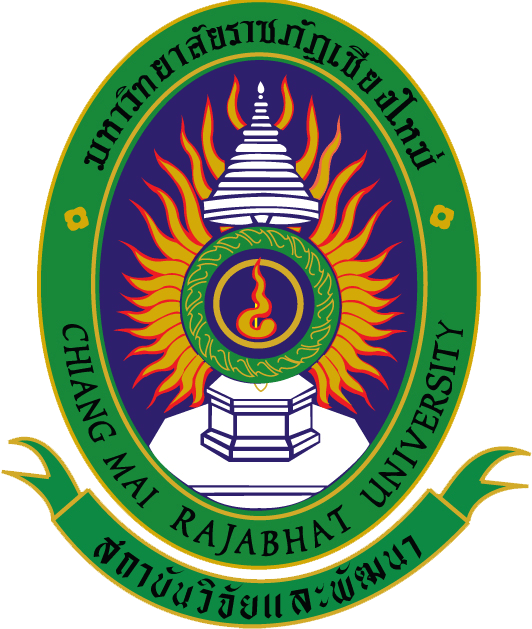
ระบบสารสนเทศงานวิจัย สถาบันวิจัยและพัฒนา มหาวิทยาลัยราชภัฏเชียงใหม่
Research Information System(RIS)
การพัฒนาน้ำหมักชีวภาพจากพืชสมุนไพรด้วยเชื้อจุลินทรีย์กลุ่มโปรไบโอติคในชุมชนสะลวง อำเภอแม่ริม จังหวัดเชียงใหม่
อาจารย์ ดร.อัจฉรียา ชมเชย
คณะวิทยาศาสตร์และเทคโนโลยี
คำสำคัญ :
เลขทะเบียน :
604-58-SCI-RSPG
บทคัดย่อ
การวิจัยครั้งนี้มีวัตถุประสงค์เพื่อศึกษาการหมักคอมบูชาจากชาสมุนไพรพื้นบ้านในชุมชนพระพุทธบาทสี่รอย ตำบลสะลวง อำเภอแม่ริม จังหวัดเชียงใหม่ สำหรับพัฒนาเป็นผลิตภัณฑ์เครื่องดื่มเพื่อสุขภาพ โดยหมักคอมบูชาจากชาสมุนไพรพื้นบ้าน 10 ชนิด ได้แก่ ชารางจืด ชาลูกใต้ใบ ชาหญ้าเอ็นยืด ชาใบหม่อน ชาชุมเห็ดเทศ ชากระดุมทอง ชามะรุม ชาหญ้าหนวดแมว ชาผักเซียงดา และ ชาใบย่านาง เป็นเวลา 20 วัน พบว่า pH มีค่าเท่ากับ 2.15-2.97 มีปริมาณกรดอะซิติกทั้งหมดเท่ากับ 0.17-0.90% และมีปริมาณแอลกอฮอล์เท่ากับ 0.035-1.621% เมื่อทดสอบฤทธิ์ต้านอนุมูลอิสระด้วยวิธี DPPH พบว่า ชาคอมบูชาจากสมุนไพรมีฤทธิ์การต้านอนุมูลอิสระ (% DPPH radical scavenging activity) โดยชาคอมบูชาของชาสมุนไพรลูกใต้ใบมีฤทธิ์ต้านอนุมูลอิสระสูงที่สุดเท่ากับ 92.45% รองลงมาได้แก่ รางจืด และ หญ้าหนวดแมว มีค่าเท่ากับ 84.28 และ 79.88 % ตามลำดับ โดยปริมาณฟีนอลิกทั้งหมดเท่ากับ 340.8 ug GAE/ml 222.7 ug GAE/ml และ 144.5 ug GAE/ml ตามลำดับ การทดสอบประสาทสัมผัสทางด้านความชอบโดยวิธี 9 point hedonic scale ของผลิตภัณฑ์คอมบูชาจากชาสมุนไพรพื้นบ้าน 10 ชนิด จากกลุ่มผู้ทดสอบ 2 ช่วงอายุ ได้แก่ 21-30 ปี และ 31-40 ปี พบว่า ความชอบโดยรวมและรสชาติของผลิตภัณฑ์คอมบูชาจากชาสมุนไพร ผักเซียงดามีค่าการยอมรับมากที่สุด คำศัพท์ : คอมบูชา ชาสมุนไพรพื้นบ้าน ฤทธิ์ต้านอนุมูลอิสระ ฟีนอลิกทั้งหมด
Abstract
The aim of this research was studied the kombucha fermentation from local medicinal herb teas in Phraphutthabat Si Roi community, Saluang subdistrict, Mae-rim district, Chiang Mai province for traditional healthy beverage. Kombucha from 10 medicinal herb teas belong to Thunbergia laurifolia Lindl., Phyllanthus niruri L., Plantago major L., Morus alba Linn., Cassia alata (L.) Roxb., Wedelia trilobata (L.) Hitchc, Moringa oleifera Lam., Orthosiphon aristatus (Blume) Miq., Gymnema inodorum (Lour.) Decne and Tiliacora triandra (Colebr.) Diels were fermented for 20 days. The pH value of kombucha about 2.15-2.97, total acetic acid about 0.17-0.90% and the alcohol content about 0.035-1.621%. The antioxidant potentials of kombucha were determined by DPPH assay. Kombucha from various herb sources showed antioxidant activities (% DPPH radical scavenging activity). The fermented sample of Kombucha from Phyllanthus niruri L. herbs showed highest antioxidant activity 92.45%, followed in the sample from Thunbergia laurifolia Lindl. and Orthosiphon aristatus (Blume) Miq. about 84.28 and 79.88 %, respectively. The total phenolic compound showed the accumulating level up to 340.8 ug GAE/ml, 222.7 ug GAE/ml and 144.5 ug GAE/ml, respectively. Consumer acceptability of Kombucha product from 10 herb teas were evaluated by 30 panelists of 2 groups on age range 21-30 years old and 31-40 years old by using 9 point hedonic scale test. The kombucha product from Gymnema inodorum (Lour.) Decne showed the highest overall preference and flavor. . Keywords: Kombucha Medicinal herb Antioxidant Total phenolic compound
ไฟล์งานวิจัย
อยู่ในระหว่างการปรับปรุงเนื้อหา462 21 มี.ค. 2561
โครงการอนุรักษ์พันธุกรรมพืช (อพ.สธ.)
สำนักงานโครงการอนุรักษ์พันธุกรรมพืชอันเนื่องมาจากพระราชดำริ สมเด็จพระเทพรัตนราชสุดาฯ สยามบรมราชกุมารี สวนจิตรลดา ถ.ราชวิถี เขตดุสิต กรุงเทพฯ ๑๐๓๐๓
0-2282-1850
admin@plantgenetics-rspg.org